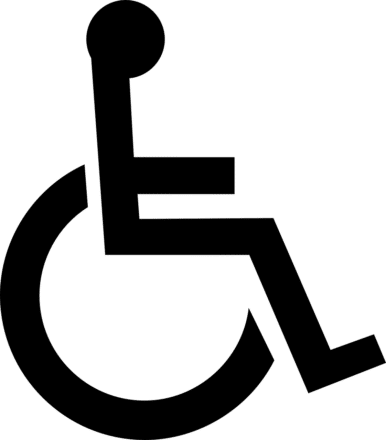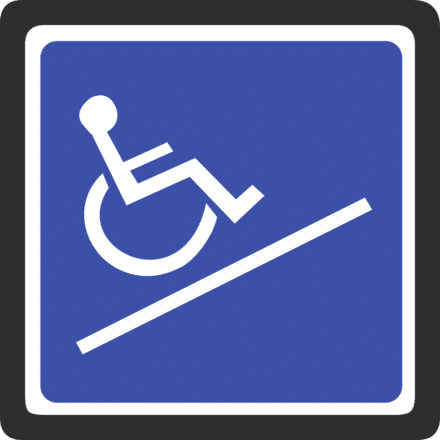Embarking on the journey of transforming your home into a safe, wheelchair-friendly oasis can seem daunting, but it doesn’t have to be. This article will enlighten you about practical modifications that can maximize accessibility and safety for the elderly and those with mobility impairments. It considers essential changes, from the bathroom, by incorporating walk-in tubs and grab bars, to widening doorways for easy wheelchair access. It even tackles tricky areas like stairways and slippery floors, offering advice on adding handrails or swapping tiles for more friction-friendly alternatives. It also shines a light on the often-overlooked factor of proper illumination, offering insightful advice on installing low-height switches and outlets. And, above all, the article emphasizes the vital role professionals play in achieving ideal quality of life and minimizing risks. By the end, you’ll feel more confident about creating a more comfortable, accident-proof living space.

Creating a Wheelhouse Accessible Bathroom
Creating an accessible bathroom can not only provide comfort for the elderly and disabled but can also prevent potential accidents and injuries that can occur in these spaces. From the design to the installation, every detail counts towards creating a safe area.
Installing Walk-in Tubs
One of the modifications you can make to your bathroom is installing walk-in tubs. With this type of tub, you no longer have to climb over high edges which can be risky for people with mobility issues. When you have a walk-in tub, you can simply open the door, step in and close it behind you. Soaking in a tub has never been easier.
Benefits of Curbless Showers
Another modification you might consider is installing a curbless shower. The benefits of a curbless shower go beyond aesthetics. Without the curb, wheelchair or walker users can roll in and out of the shower easily, making showering an independent task.
Importance of Raised-height Toilets
Raised-height toilets are another important feature for wheelchair accessible bathrooms. The regular toilet seat height may make transferring from a wheelchair challenging. A raised seat can thus make the toilet more comfortable and easier to use.
Integrating Grab Bars for Support
Installing grab bars next to your toilet, in your shower or tub can provide the necessary support for standing and moving. These support bars are essential for those who have balance and strength challenges, providing a handhold during transitions.
Home Safety with Grab Bars
Grab bars are not exclusive to bathrooms, they can be installed around the home to improve safety, augment balance, and help prevent falls.
Preventing Falls Around the Home
Whether in the kitchen, hallway, or the bedroom, grab bars can provide an extra level of safety. With them around, you can hold onto something stable when moving around the house to prevent stumbling and falls.
Improving Independence with Secure Support System
Grab bars also play a key role in promoting independence at home, especially for those who prefer to do things on their own. They offer a solution for those moments when you need a little extra support.
Holistic Placement of Grab Bars
In considering where to place grab bars, think about them holistically. They should be easily accessible, securely fastened, and able to support weight. This can bring about a real difference in the overall safety and accessibility in your home.
Ensuring Mobility with Wider Doorways
Wider doorways are crucial when redesigning your home for accessibility. With a wider doorway, you can navigate through your home with ease.
Necessity of Widening Doorways
A common modification in a wheelchair accessible home is enlarging doorways. Standard door widths may not be wide enough for certain mobility aids, and widening these doorways will ensure comfortable and easy movement.
Considering Mobility Aids and Accessibility
When considering mobility aids, think about how they would move around your home. Would a wheelchair fit through your current doorways? Is there enough turning space for them? These are factors that should be prioritized when planning for wheelchair accessibility.
Process of Doorway Enlargement
Widening your doorways is a task best left to the professionals. They can evaluate your current doors and figure out the best approach for expanding them, ensuring they follow accessibility standards.
Installing Ramps and Threshold Plates
Ramps and threshold plates are an important part of an accessible home. They can help smooth uneven surfaces and ensure a safer and smoother transition between rooms, and in and out of your home.
Smoothing Uneven Floor Surfaces
To prevent tripping and falling, consider installing ramps or threshold plates to smooth uneven floor surfaces, such as the entrance of your home. By doing so, you minimize the risk of missteps and slips.
Reducing Risks of Tripping and Falls
Floor ramps and threshold plates can also reduce the risk of tripping and falling, especially for those who use wheelchairs, walkers, or have stability issues.
Selecting the Right Ramp and Threshold Plate
When choosing a ramp or threshold plate, consider the slope and the material of the product. You want to choose one that is sturdy and designed for your specific needs.

Modifying Stairs for Safer Use
Safety improvements for stairs improve not only convenience but also the overall accessibility of multistory homes.
Adding Handrails for Support
Adding handrails on both sides of the stairs can provide ample support. This simple addition can enhance safety and boost confidence when moving up or down the stairs.
Installation of Stair Lifts
A stair lift effectively eliminates the need to use the stairs. They are an excellent choice for those with mobility issues, and allow for easy movement between different levels of the home.
Use of Brighter LED Lights
Proper lighting on stairs can prevent falls. Consider upgrading your stairway lights to brighter ones for better visibility.
Importance of Non-slip Treads
To prevent slips and falls, consider adding non-slip treads on each stair. They provide traction and thus, an additional layer of safety.
Maintaining Safe Flooring
It’s important to pay attention to your flooring. It should be level, smooth, and slip-resistant.
Identifying Hazardous Flooring Types
Certain flooring types can be slippery when wet, and pose a risk of falls. Hence, it is important to replace or treat such flooring to make it safer.
Solutions for Slippery Tiles
If you have slippery tiles, you can either choose to replace them with safer options or treat them with anti-slip solutions. Either choice should lead to safe, secure flooring in your home.
Improving Traction through Treatment or Replacement
Improving the traction on your floor is crucial to preventing slips and slips. This can be achieved by treating your current floors or replacing them with a more slip-resistant option.

Enhancing Home Lighting
Improving the lighting in your home can greatly increase safety and accessibility, especially for those with limited vision.
Improving Visibility with Better Illumination
By providing better illumination, you can make it easier to see potential hazards or obstacles, making your home safer and more accessible.
Minimizing Trip Hazards
Increased visibility can also help minimize trip hazards by making it easier to see and avoid potential stumbling blocks.
Lowering Light Switches and Electrical Outlets for Accessibility
Lowering light switches and electrical outlets to a comfortable height increases their accessibility, making it easier to reach without straining.
Consulting Professionals for Home Modifications
While you can make many home modifications on your own, sometimes it’s necessary and beneficial to consult with professionals.
When and Why to Involve Professionals
You may be unsure of what changes are necessary, or how to implement them correctly. In such cases, it’s best to seek guidance from professionals. Their expertise and guidance can ensure you do things right the first time.
Finding the Right Team of Experts for Home Adaptation
When choosing a professional team, look for those who have experience in home adaptations. They should understand your needs and be able to suggest tailored adaptations that will increase your home’s accessibility.
Role of Professionals in Ensuring Effective Alterations
Professionals can ensure that the alterations made to your home not only meet accessibility standards and regulations but are also suited to your personal needs and preferences.
Widening Doorways and Hallways for Wheelchair Accessibility
Creating more space within your home can greatly enhance mobility, allowing you to move around freely.
Understanding the Suitability of Different Spaces for Modifications
Not all doorways and hallways may be suitable for widening. A professional can advise you on what changes can realistically be made in your home, taking into account structural elements and overall layout.
Role of Professionals in Widening Doorways and Hallways
Without professional help, it can be hard to know where to start. Professionals can provide guidance on the best ways to widen doorways and hallways without compromising the integrity of your home’s structure.
Ease of Movement and Importance of Space
The more space you have to move about, the easier it is to navigate around your home. This reduces risk of injury and enhances overall comfort.
Reducing Risk and Improving Quality of Life through Home Adaptations
Investing in home adaptations can significantly improve the quality of life for the elderly and disabled by reducing the risk of accidents and promoting independence.
Evaluating the Benefits of Home Modifications
The benefits of home modifications extend beyond improved functionality and aesthetics. These changes can reduce the number of home accidents, encourage independence, and ultimately lead to a better quality of life.
Recognizing the Potential Risk Reduction
Recognizing the benefits of improved home safety through adaptations is the first step towards risk reduction. By addressing potential dangers in your home, you can promote safe and comfortable living.
Understanding the Impact on Quality of Life for the Elderly and Disabled
The increased independence and safety offered by an accessible home can greatly enhance the quality of life for the elderly and disabled. These improvements can foster confidence and peace of mind, embracing a more comfortable lifestyle.
Importance of Ongoing Evaluation and Adjustments
Just as our needs change over time, so too should our living environment. Periodic evaluations and necessary adjustments in the home are key to maintaining a safe and accessible living space. Therefore, ongoing home modification is a process of continuous improvement.
In conclusion, creating an accessible home requires careful planning and thoughtful changes. Each modification is unique and personal, echoing individual needs, and emphasizing ease of access and safety. Professional guidance can greatly help in implementing these changes, ensuring the home is not only more functional but also a delightful space to dwell in.
